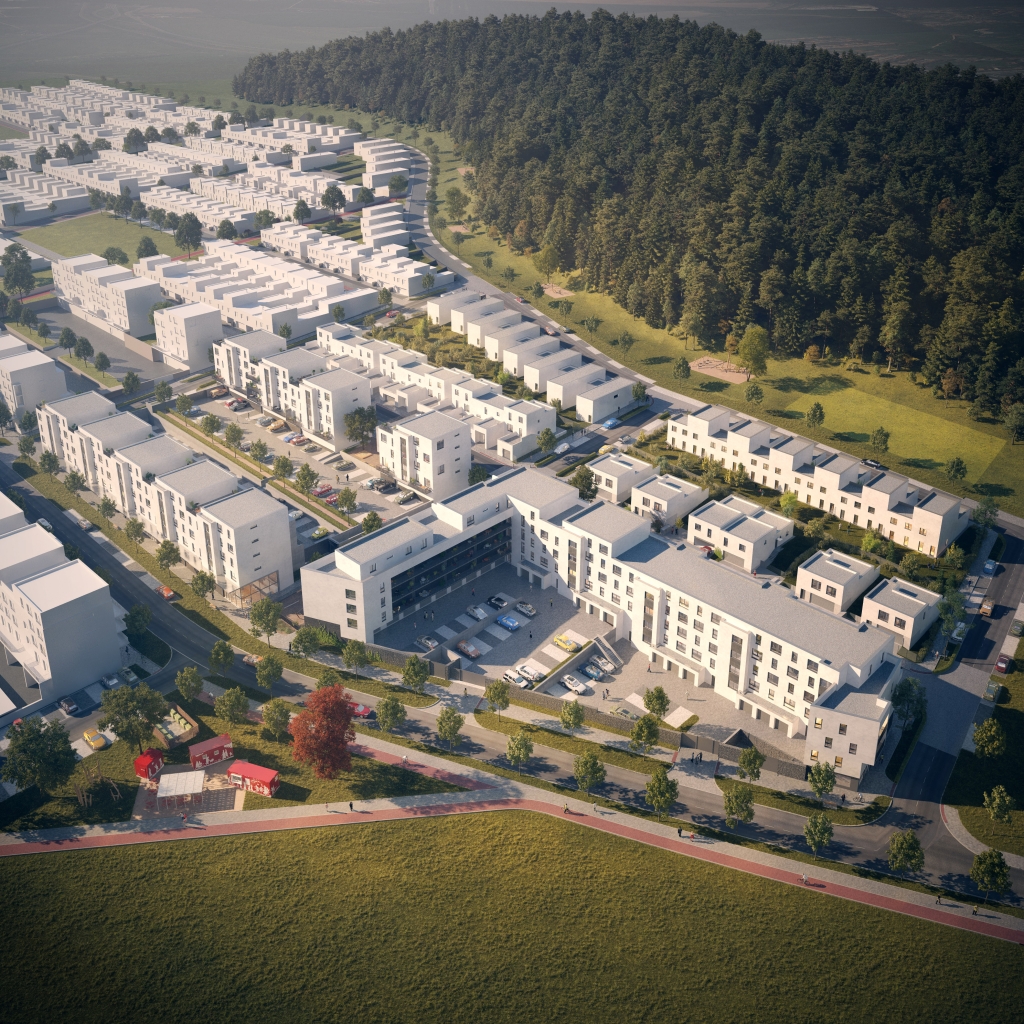There are a number of sites in the BMO that currently have no use, but some of these could be significantly transformed in a few years. Their development is ensured primarily by a comprehensive approach to the solution of the given areas.
A vacant and undeveloped or built-up but unused location in a large city or its hinterland is often considered an ideal place for development, not only for housing but also for business activities. In reality, however, its suitability depends on many other factors. It is important to provide adequate transport links and a good range of public services so that people can get to work and school quickly and easily, or travel for culture or sport, and have good access to basic services such as retail, education, and leisure. Only those development sites that have these factors in place will contribute to the continued balanced growth of the whole metropolitan area.
If development is not addressed comprehensively, the well-known negative consequences of suburbanization will soon follow. With the ITI, we are able to both mitigate these consequences retrospectively and support future projects to ensure that the development site does not lack anything at the outset. For example, we finance the construction of cycle paths, interchanges, public spaces, schools, and parking facilities, and this set of projects will be implemented within the locality. With this approach, everything that the locality needs is built in a relatively short time. At the same time, we are gradually fulfilling the vision of our strategy, which aims to support the development not only of Brno but also of other secondary centres in BMO.
The area near the train station in Bučovice, for example, will be transformed in such a comprehensive way. The local Uměleckoprůmyslový závody used to produce furniture, but then the company became an unused and dilapidated brownfield. The demolished factory buildings will be replaced by modern housing and quality public spaces with greenery. The new family and apartment buildings will be complemented by multi-purpose sports facilities, a children’s playground, and a park. There will also be elements of blue-green infrastructure with the environment in mind, including the revitalization of the Litava River, around which a cycle path will run. Residents of the locality will appreciate the proximity of the railway station with a direct connection to Brno and the view of the adjacent castle. The general public will make use of the P+R parking for cars and B+R (bike and ride) for bicycles.

A completely new district is being built north of Brno in Kuřim, which will increase the town’s population by a third once it is completed. One thousand flats and nearly three hundred family houses will be built in the Záhoří locality. The entire construction will connect Kuřim with the local district of Podlesí, which is still separated from the town by fields and a busy road towards Svitavy. However, the new district will not only offer housing. It will also include a kindergarten, a primary school, and a secondary school. Sufficient parking capacity, recreational zones, parks, blue-green infrastructure, and the use of smart technologies are, of course. Both the private and public sectors are simultaneously involved in the construction of the district.

In Brno, we focus, for example, on the following development sites:
Smart district Špitálka – the area of former heating plants will become Brno’s first smart district.
Nová Zbrojovka – a new district for 20,000 people is being built in the former industrial area.
New Trnitá district – the heart of the area will be a wide boulevard from the new railway station to the city centre.
Brno Technology Park – the site will be expanded to include housing, offices, parking and sports facilities.
Přízřenice development site – the new district will be connected to the city by a tram or trolleybus line.
Register your e-mail address to receive regular updates from the Brno Metropolitan Area.